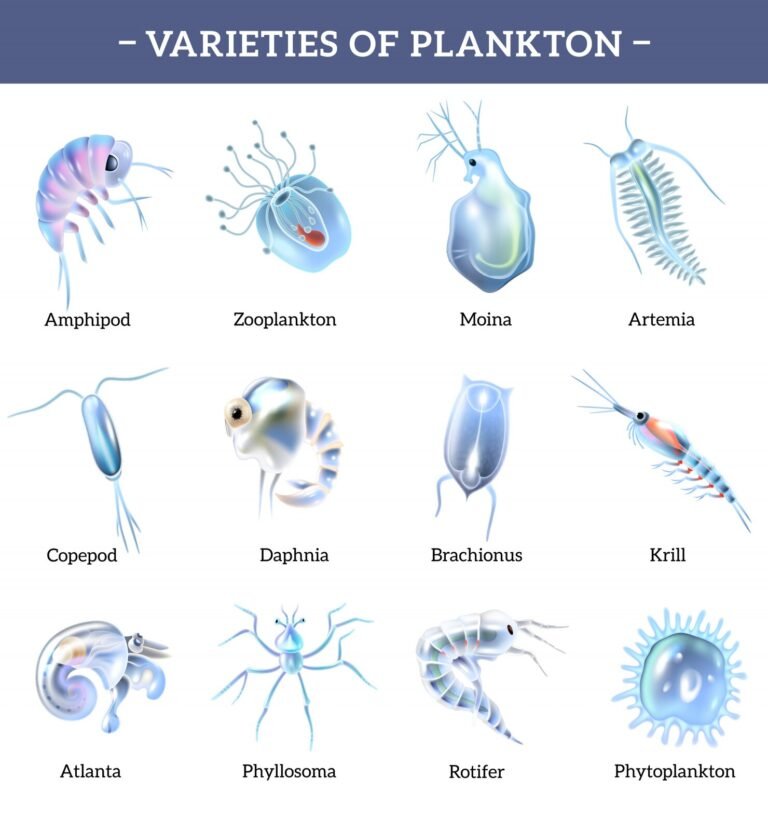Artificial Wetlands Wastewater Treatment: How Man-Made Wetlands Clean Our Water Naturally
In dusty land outside Mexicali, Mexico, a once‐wretched sewage landscape has been reborn through a 99‑hectare artificial wetland. Known as Las Arenitas, this constructed lagoon has become a vibrant living system, turning raw sewage into clear water and flourishing habitats. South of the U.S.-Mexico border, wastewater from Mexicali (over 46 million m³ annually) now passes through lagoons and wetland cells planted with tule and reeds. As a result, bird species counts soared from 8 to 160, and water discharged into the Hardy River now meets environmental standards. Edith Santiago, deputy director of the Sonoran Institute, remarked, “Wetlands are the kidneys of the planet—they filter and clean the water, remove particles through plants.”
This is far more than a water‐cleanup system. The wetland is a living classroom and aquifer recharge zone. It has reignited hope for a Colorado River delta long thought beyond recovery.
At its core, this project showcases a broader truth: artificial wetlands are dynamic, adaptable, and far more than static sewage ponds. They offer scalable options from small villages to municipal systems, with ecological benefits far beyond basic water purification.

In This Article
- From Humble Origins to Cutting‑Edge Science
- Case Studies & Innovative Insights
- Cutting‑Edge Research and Innovative Challenges
- A Path to Cleaner Water & Communities
- Actionable Advice: Turning Knowledge into Impact
- Conclusion
- Suggested Actions
From Humble Origins to Cutting‑Edge Science
The concept of constructed wetlands isn’t new. It stretches back to the 1950s when German botanist Käthe Seidel, a pioneer of green engineering, planted bulrushes in polluted Rhine River water near Krefeld. After just weeks, phosphorus and nitrogen concentrations dropped, and oxygen levels rose. Her low‐cost, plant‑based system costs about one‑third of conventional treatment plants of the era. Seidel’s innovation—combining vegetation and microbial action—sparked a revolution in wastewater treatment ecology.
Research over the past six decades has confirmed her vision. Constructed wetlands (CWs) now treat domestic sewage, industrial effluent, agricultural runoff, and pollutant-saturated mine drainage. A comprehensive review recently reported 40+ plant species (like Phragmites, Typha, Scirpus) and more than 30 substrates employed worldwide in CW systems. The United States EPA documented 17 case studies of CWs functioning as both wastewater treatment and wildlife habitat.
But modern advancements go beyond rooted plants in gravel beds. Systems now include hybrid sub-surface/ surface flow, floating treatment wetlands, aeration enhancements, and even bioelectrochemical configurations like microbial fuel cell wetlands (CW-MFCs).
In Rwanda’s Gasabo district, according to a 2023 study, researchers documented a constructed wetland treating municipal sewage over a full year. They measured eight parameters—including nitrogen, phosphorus, BOD, and COD—across dry and rainy seasons. Influent water quality scored “poor” to “marginal” on the Canadian CCME index (scores ~42–46). After passing through wetland cells, effluent quality improved dramatically to “good” levels (scores ~87–89).
Case Studies & Innovative Insights
| Location | System Type | Pollutants Treated | Results / Comments |
|---|---|---|---|
| Mexicali, Mexico | Surface-aerated + constructed wetland | BOD, nitrogen, phosphorus; bird habitats | Biodiversity up 20×; 50% of flow released to Hard River |
| Gasabo, Rwanda | Horizontal sub-surface CW | pH, TN, TP, BOD, COD, DO, TSS, TDS | Effluent water ranked “good” on CCME-WQI |
| Arcata, California | Oxidation ponds + wetland cells | Secondary treatment and wildlife enhancement | A sewer system and sanctuary coexisting, with no odour, and public trails |
| Seadrift, Texas (Dow) | Industrial CW for algae control | Suspended solids (algal biomass) | 5 million gal/day treated at $1.4 M versus $40 M industrial plant. |
| Nepal (Nagdaha Lake) | Floating trash‐based wetland | Nitrates (−99%), phosphates (−80%), ammonia (−55%) | Built using PET bottles, bamboo; local community-guided. |
Arcata, CA, shows how constructed wetlands can meet many community needs. Since the 1970s, oxidation lagoons have flowed into wetland cells that clean the wastewater before it enters marshes that support wildlife. The result is a clean, odour-free system with thriving wildlife and public trails.
In Seadrift, Texas, a Dow‐built CW processes 5 M gal/day of industrial wastewater. Original design cost $1.4 M versus $40 M for a conventional plant, while complying fully with EPA discharge limits, and is designed to remain operational for decades to come.
Then there’s the story of floating treatment wetlands in Nepal, led by Soni Pradhanang. Instead of $600 proprietary platforms, she designed floating mats of trash, bamboo, and coconut fibre. Plants like Canna indica and Salvia splendens thrived; nitrates dropped by 99%, phosphates by 80%, and ammonia by 55%. Her “trash for cash” method is now being expanded in India and Bangladesh.
Cutting‑Edge Research and Innovative Challenges
Recent science continues to push CWs toward new frontiers. Researchers are experimenting with:
- Bioelectrochemical Wetlands (CW‑MFCs and CW‑MECs): These systems integrate electrodes into wetland matrices, generating low‐level electricity while improving pollutant removal. Lab studies found modest COD and ammonium increases (+5–22%) in closed‐circuit systems compared to controls. However, pilot studies revealed efficiency drops after 7–8 weeks, limiting accuracy.
- Hydrodynamics Optimisation: A February 2025 Nature article stressed that internal water flow paths are key to treatment efficiency. Researchers found uneven flow zones (dead zones) reduce pollutant contact time.
- Substrates & Plants Diversification: Mexican, Peruvian and Spanish research highlights new substrates (coconut peat, palm shells) and under‐studied plant species (Duranta repens, Pennisetum pedicellatum, Pistia stratiotes) with promising pollutant uptake.
- Cost‑Benefit Sustainability: A study modelling CW deployment in Sicily and Emilia‑Romagna found benefit-to-cost ratios of 1 (Sicily) or 10 (Emilia‑Romagna), rising to 4 and 10 when ecosystem services were included.
Yet there remain unresolved challenges:
- Unregulated Toxins (PFAS): Short‑chain PFAS frequently survive conventional wastewater processing. Recent U.S. reporting by The Guardian highlighted that wetlands used for restoration are being contaminated with PFAS, yet monitoring remains limited.
- Political Disputes: In Louisiana, repurposing treated effluent for wetland restoration has sparked controversy. Critics argue that insufficient regulation and unclear long-term ecological outcomes.
- Scale‑up Costs & Space Requirements: Even with low‑cost installations, land area and permitting can be barriers in urban or industrial contexts. Mexicali’s Las Arenitas was already beyond capacity by 2013, yet expansion has stalled.

Learn More: How Rain Gardens Turn Runoff into Clean Water Garden Features
A Path to Cleaner Water & Communities
In slum communities, remote villages, or industrial suburbs, constructed wetlands offer more than technical solutions—they are community projects with living value.
Consider the SOS Children’s Village near Tirana, Albania. Since 2009, a CW has treated sewage from children and staff (~500 daily) while providing learning opportunities about eco‑engineering, recycling, and plant ecology. Teachers report children are “inspired to see worms, tadpoles, and waterfowl in what was formerly just ‘poo pipes’.”
In Kigali, Rwanda, local technicians now routinely test effluent and adjust plant density according to BOD fluctuations. They describe pride in turning something harmful into life-giving, with the CW doubling as an outdoor classroom. According to the 2023 study, local operators became “first‑line environmental heroes.”
And back to Las Arenitas, where elder Cucapa community members paddle canoes in the lagoon, pointing to returning species. “That the water from Las Arenitas flows along the Hardy River generates environmental potential,” Santiago said, highlighting restoration not just of biodiversity but also of cultural identity.
Learnings That Matter
Across these varied examples, several patterns emerge:
- Hybrid design boosts performance – Combining surface and subsurface flow, aeration, and even electrodes improves pollutant removal and stabilises ecosystems.
- Local materials empower impact – Using trash, local plant species, or even coconut peat reduces cost and fosters community ownership.
- Water reuse multiplies benefits – Discharging treated water into rivers, aquifers, or irrigation systems extends CW value beyond pollution control.
- Monitoring is essential – Simple CCME scores, electrode voltage readings in CW‑MFCs, or seasonal toxics testing guide adaptive maintenance.
- Beware of PFAS and emerging contaminants – No CW tested can fully remove PFAS; additional tertiary steps or policy regulation are needed.
Actionable Advice: Turning Knowledge into Impact
For community leaders, engineers, or NGOs considering a constructed wetland, here’s a guided roadmap:
- Assess water and land context: Determine influent type (domestic, industrial, agricultural) and local land availability. Horizontal subsurface flow suits villages; surface/aerated systems fit open sites.
- Choose a resilient plant–substrate combo: Rely on proven species (Phragmites, Typha) but evaluate local alternatives. Consider substrates like gravel mixed with palm shells or coconut fibre for better nutrient adsorption.
- Optimise hydraulic design: Ensure even distribution of flow, avoid dead zones, and target hydraulic retention times of 5–10 days. Add aeration or hybrid flow as needed.
- Incorporate low-cost monitoring
- Use CCME-WQI for seasonal evaluations.
- For CW‑MFC systems, monitor voltage to track COD removal trends.
- Periodically test for heavy metals and PFAS—if present, add tertiary or activated carbon units.
- Plan for community engagement
- Involve schools and local artisans in building platforms or planting.
- Train local operators in system maintenance.
- Host wetland tours and citizen science events.
- Prepare for scale and longevity
- Build capacity for expansion as needed—monitor inflow vs. capacity annually.
- Budget for decadal recalibration of substrate, plant harvesting, or bioelectrode upkeep.
- Seek ecosystem service payments from conservation NGOs or government programs.
Conclusion
From Käthe Seidel’s bulrush bogs in Germany to Las Arenitas in the Arizona-Mexico border region, artificial wetlands have matured into integrated solutions—technical, ecological, and cultural. They filter water, recharge aquifers, nurture wildlife, strengthen communities, and inspire future generations.
The journey from humble reed beds to hybrid aerated and bioelectrochemical systems reveals that innovation doesn’t require high-tech labs—it happens when people harness nature’s processes with intentionality and care. Used right, constructed wetlands become living infrastructure, part of a planet‑friendly approach to water management.
If you’re planning a wetland project, start small, monitor well, and grow in dialogue with your environment and community. This is modern ecological engineering—effective, beautiful, and deeply human.
Learn More: Waste of Water: Figures, Causes, Impact, and Sustainable Solutions
Suggested Actions
- For local councils or NGOs: Seek grants for hybrid or floating wetland pilots; commit to multi-year monitoring, including PFAS.
- For engineers and designers: Collaborate with botanists to diversify plant choices, and include hydrodynamic modelling in design plans.
- For educators: Embed wetland monitoring in local school curricula to combine STEM learning with real-world stewardship.
- For policymakers: Recognise ecosystem services (habitat, aquifer recharge, recreation) in funding frameworks; mandate pollutant standards for treated effluent, including emerging toxins.







